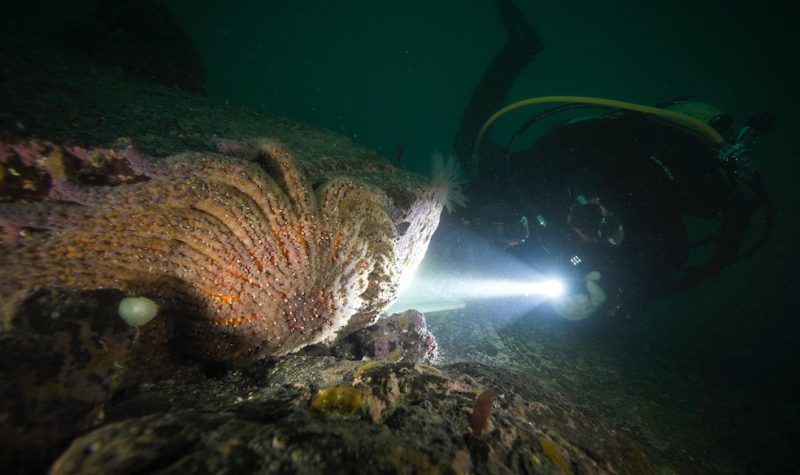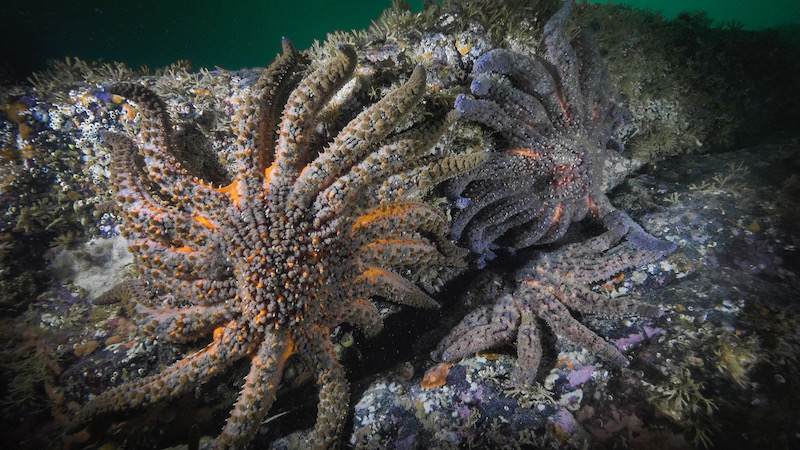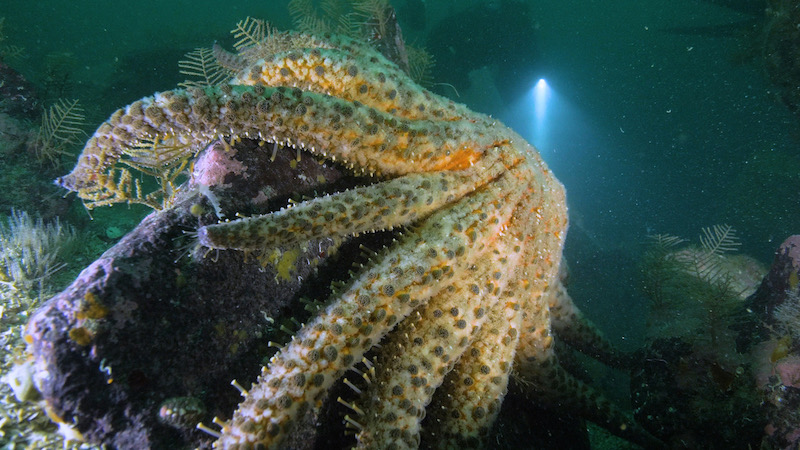While the many legged Sunflower Sea Star is now nearly extinct in most of the United States, there is still hope it may survive in British Columbia. Researchers have seen signs of recovery in a few areas, including the Discovery Islands, despite the threats to the marine population.
“Starting in 2013, there was a huge decline,” said Dr. Alyssa Gehman, from the Department of Zoology at UBC and the Hakai Institute.
She was referring to the outbreak of Sea Star Wasting Disease among over 20 different species of sea stars between the Mexican border and Aleutian Islands. The Sunflower Sea Star was the hardest hit.
Gehman is one of the authors of "Disease-driven mass mortality event leads to widespread extirpation and variable recovery potential of a marine predator across the eastern Pacific" which was published by the Royal Society on Aug. 25.
The paper is based on data from close to 49,000 surveys carried out along the West Coast from California to Alaska, between 1968 and 2020. There have been no known sightings in California since 2015. They have almost disappeared from Oregon and some survivors are found in northern Washington. The Sunflower Sea Star’s mortality rate in this region of the contiguous United States is more than 99 per cent. Across the border, in B.C. and Alaska, 88 per cent have perished.
“We have started to see something that looked a bit like recovery in some areas. Unfortunately, in those areas, we’ve also seen repetitive declines. We’ve seen juvenile recruits in some locations and we’ve actually found some in areas in the Central Coast and around Discovery Islands, where there are even some large animals,” said Gehman. “It makes for an area of active research, where we are trying to understand why some of them are surviving.”
Prior to this paper, scientists did not realize how unique the species’ survival in B.C. was to date.
The Friday Harbor Laboratories, on San Juan Island, has successfully spawned Sunflower Sea Stars in the lab and these creatures are now a year and a half old.
“That’s incredibly hopeful, but to go along with that we know that a wasting disease was associated with this outbreak and we really need to understand more about that disease before we try to recover the species, and that’s another active research project that is going on right now,” said Gehman.




